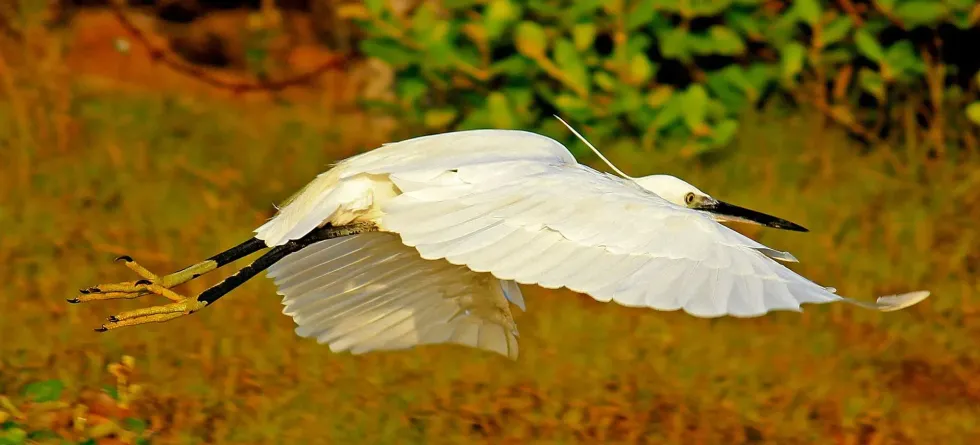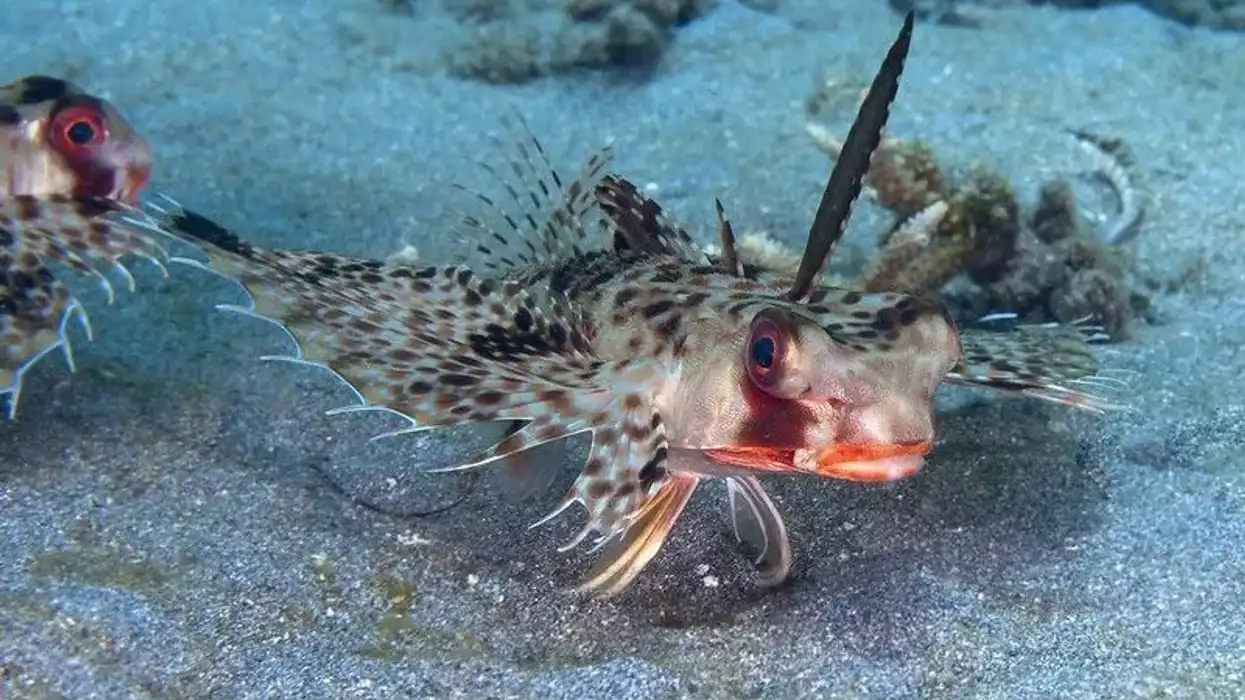The great egret is a large, tall, white bird that has a neck that looks like an 'S' and a long yellow bill. It has a short tail and while flying, its legs surpass the tail and extend further.
This bird breeds in colonies and starts breeding after turning 2-3 years old. Its breeding range includes countries like India, Pakistan, Bangladesh, Myanmar, Thailand, Korea, Japan, Indonesia, China, and northeast Russia. Their bodies go through a significant change in color when they breed.
For most of the year when they are not breeding their facial skin and bill are yellow in color. When they breed their facial skin turns green and the bill becomes blackish. Their legs turn pinkish-yellow.
Young great egrets are similar to adults but have a blackish tip on the bill. Their breeding season commences from mid-April. The great egret is a colonial and monogamous bird that is found throughout the world.
If you like what you read do check out the great egret and the cattle egret.
Eastern Great Egret Interesting Facts
What type of animal is an eastern great egret?
The eastern great egret is a huge bird belonging to the 'Animalia' kingdom that resembles a crane in appearance with its white plumage. This falls in the category of wading birds. It often stays stagnant and waits until its prey approaches it and also catches its prey while swimming.
What class of animal does an eastern great egret belong to?
The great egret is a bird, hence it belongs to the class of 'Aves'.
How many eastern great egrets are there in the world?
According to the IUCN Red List, there are 590,000-2,200,000 mature great egrets.
Where does an eastern great egret live?
These eastern great egrets live in tropical and temperate weather conditions in India, southeast Asia, North and South America, Australia, New Zealand, Europe, and Africa. They prefer warmer climates and usually migrate to warm places during winter.
What is an eastern great egret's habitat?
The habitat of the eastern great egret ranges from streams, lakes, marshes, and swamps that have more plants around them. They are also seen along coasts.
You may also spot them in lagoons, river mudflats, mangrove swamps, and offshore reefs. They can be found in both saline water as well as freshwater habitats. They like staying in shallow water that is not stagnant and are also seen in grasslands, pastures, and ponds.
Who do eastern great egrets live with?
The eastern great egret stays in colonies, although sometimes it can be seen hovering around alone. During the breeding season, it is also seen with other birds along with its own species.
How long does an eastern great egret live?
The average lifespan of great egrets is 15 years while the oldest known egret has survived 22 years in the state of Ohio in the United States.
How do they reproduce?
These birds during mating form colonies and nest in trees. Males locate a breeding spot and attract their partners.
They form an 'S' with their body and try to attract their partners to engage in mating with them. Female birds produce four eggs at a time and males and females together look after their eggs throughout the incubation period until their eggs hatch. Eggs are pale green in color.
The Ardea modesta or great egret breeding commences in mid-April and they breed once every year. They develop breeding plumage that may or may not exist throughout the year.
They nest in Asian countries like India, Pakistan, Bangladesh, Myanmar, China, Korea, northeast Russia, Japan, Indonesia, and North and South America.
What is their conservation status?
According to the IUCN Red List, the great egret has been listed as Least Concern.
Eastern Great Egret Fun Facts
What do eastern great egrets look like?
The plumage of the great egret is usually white but changes slightly in breeding. They have black or dark olive legs and the facial skin of these birds is yellow in color.
Their bill is long and yellow with a black tip and resembles a dagger. There is a dark line that extends from the bill to behind the eye. They are tall birds that are almost 36 in (91.4 cm) tall when standing and they have a wingspan of 51-66 in (129.5-167.6 cm).
How cute are they?
These birds are tall and large. They look majestic with their milky white wings but are not cute per se.
How do they communicate?
The great egret communicates by making croaking sounds and squealing. It croaks loudly if it is being bothered. It is loud when it is in search of its partner for mating.
How big is an eastern great egret?
The eastern great egret is a majestic white bird that is seen in most parts of the world. It is often compared to a snowy egret that is also similar in appearance and size. Great egrets are quite big in size and their length varies between 32-40 in (81.2-101.6 cm). They have a wingspan of 51-66 in (129.5-167.6 cm).
How fast can an eastern great egret fly?
The great egret does not fly at a great speed. It flies at a speed of 25 mph (40.2 kph) with two wingbeats every second.
How much does an eastern great egret weigh?
The great egret is a tall bird and has milky white plumes. Its weight varies between 1.54-2.64 lb (698.5-1,197.4 g). Males weigh slightly more than females. These birds, however, weigh slightly more than reddish egrets.
What are the male and female names of the species?
No distinct scientific names for males and females of this species have been assigned. Both male and female egrets are known by the same scientific name.
What would you call a baby eastern great egret?
The eastern great egret juvenile is called a 'hatchling'. They look almost identical to mature ones and are covered with fluffy feathers but do not have plumes like adult birds. These hatchlings also have a yellow bill with a blackish tip. Eggs look pale blue or pale blue-green.
What do they eat?
The great egret feeds on small fish, amphibians like frogs and salamanders, reptiles like snakes, small mammals, birds, and invertebrates like crustaceans, shrimps, small worms, beetles, and grasshoppers. It catches its prey standing still in shallow water until its prey approaches.
Are they dangerous?
These birds should not be provoked as they can become aggressive and attack. They can also attack if their young ones are in danger.
Would they make a good pet?
No, these are wild birds and cannot be kept at home and would not make good pets.
Did you know...
The word “egret” has been borrowed from the French word “aigrette” which implies “plume feathers” or ornamental feathers. The great egret (ardea modesta) may or may not develop these plume feathers normally but they develop them during the breeding season.
The eastern great egret bird forms colonies and breeds. Other than birds from their own species these colonies also have birds from other species like cormorants.
Male egrets are known for choosing the spot for attracting their female counterparts to breed.
They often find old nests and use them for breeding.
Both parents are seen taking care of eggs during the incubation period.
The great egret has been used as the symbol of the National Audubon Society. The National Audubon Society is a non-profit organization solely devoted to the conservation of birds.
These birds, during winters, travel to warmer regions and hover around river coasts.
The great blue heron is often thought to be a subspecies of the great egret ardea alba.
It is known as 'kōtuku' in New Zealand.
These birds are distributed in all continents across the world except Antarctica.
The great egret (ardea modesta) is also known by names such as “shitepokes” or “shilepokes” and “shypokes.”
Different types of egrets
There are several classifications of the great white egret.
Some of the similar species are as follows: the Ardea alba alba (Linnaeus) is mostly found in Europe, the Ardea alba egretta (Gmelin) is found in North America and South America, the Ardea alba modesta is found in Africa, and the Ardea alba modesta is found mostly in southeast Asia, India and Oceania.
What is the difference between a great white heron and an egret?
A great white egret can be distinguished from a great blue heron in few ways although both are similar species. Both these birds are a part of the same family and they are quite similar in appearance.
The most striking difference is between the two is the clear difference in the color of their feathers. The ardea modesta or the great egret is white in color and acquires plumes only during the breeding season and may lack them throughout the year. The color of herons is slightly grayish. Egrets are distinctively smaller than herons.
Herons, just like the adrea modesta, are coastal, freshwater birds. The most noticeable feature of a heron is that it can retreat and extend the neck while in flight. Beaks of herons are heavier than egrets.
Here at Kidadl, we have carefully created lots of interesting family-friendly animal facts for everyone to discover! For more relatable content, check out these little egret facts and egret facts for kids.
You can even occupy yourself at home by coloring in one of our free printable stint bird coloring pages.










